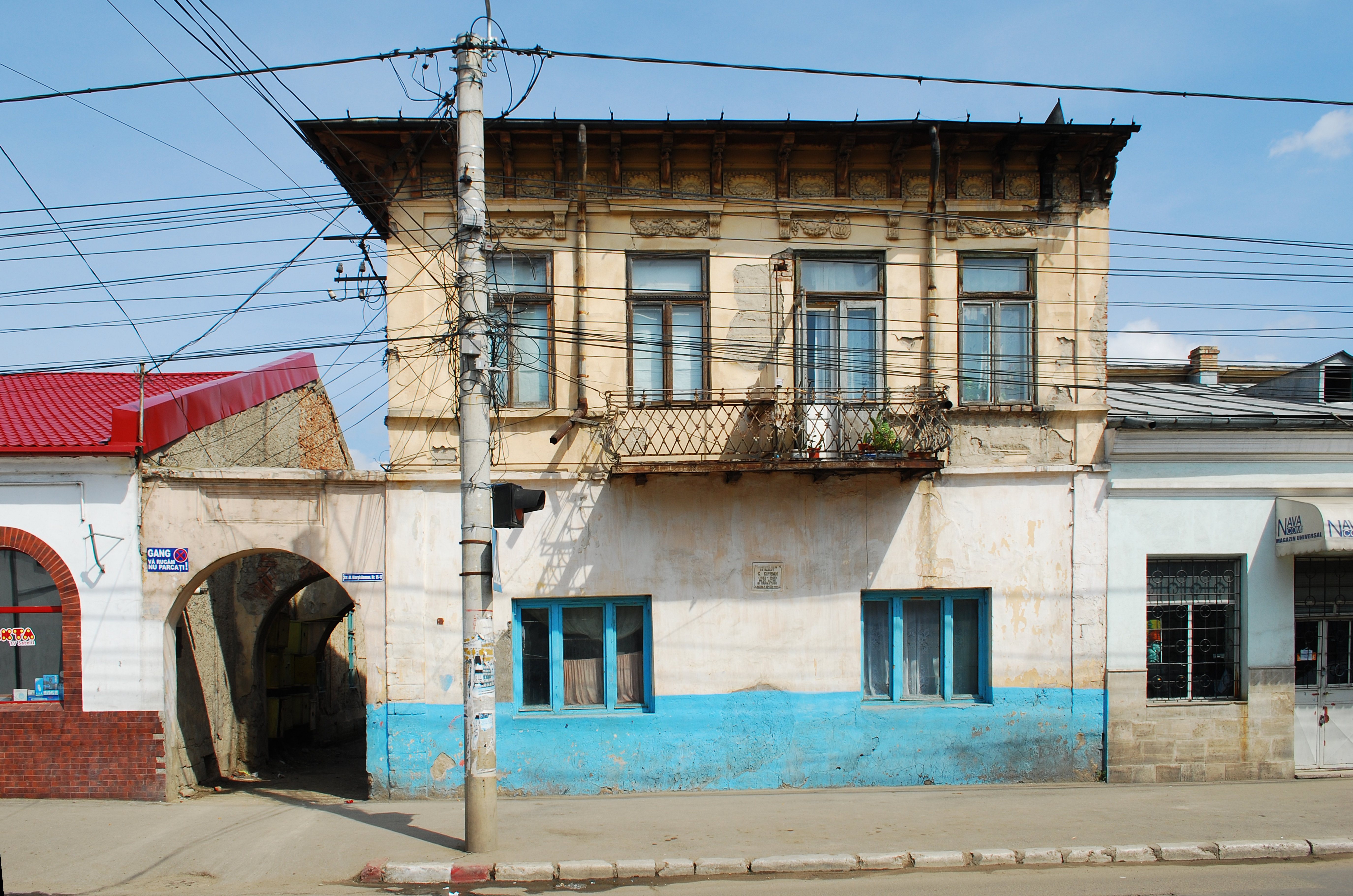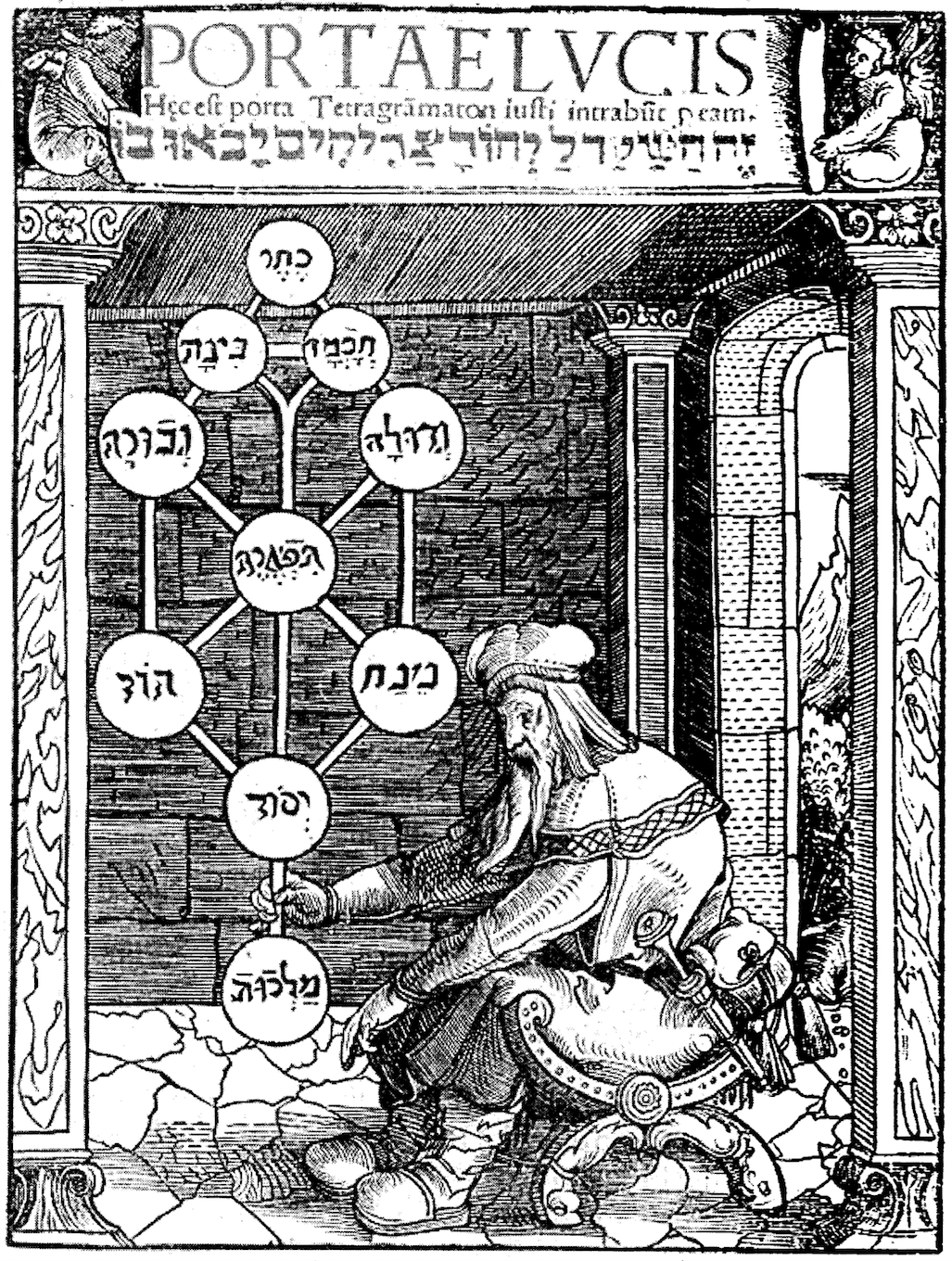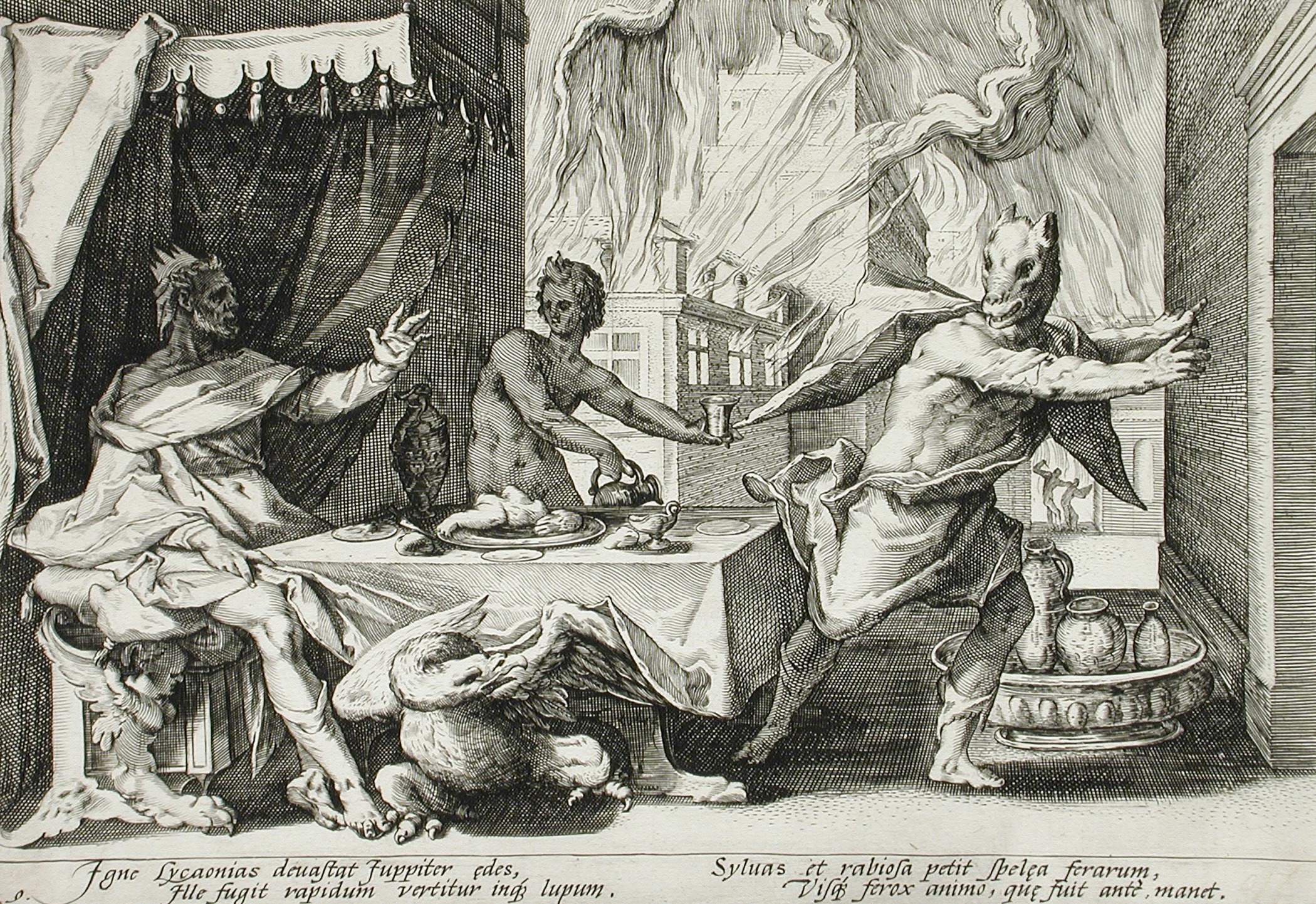|
Urmuz
Urmuz (, pen name of Demetru Dem. Demetrescu-Buzău, also known as Hurmuz or Ciriviș, born Dimitrie Dim. Ionescu-Buzeu; March 17, 1883 – November 23, 1923) was a Romanian writer, lawyer and civil servant, who became a cult hero in Romania's avant-garde scene. His scattered work, consisting of absurdist short prose and poetry, opened a new genre in Romanian letters and humor, and captured the imagination of modernists for several generations. Urmuz's ''Bizarre'' (or ''Weird'') ''Pages'' were largely independent of European modernism, even though some may have been triggered by Futurism; their valorization of nonsense verse, black comedy, nihilistic tendencies and exploration into the unconscious mind have repeatedly been cited as influential for the development of Dadaism and the Theatre of the Absurd. Individual pieces such as "The Funnel and Stamate", "Ismaïl and Turnavitu", "Algazy & Grummer" or "The Fuchsiad" are parody fragments, dealing with monstrous and shapeshifting ... [...More Info...] [...Related Items...] OR: [Wikipedia] [Google] [Baidu] |
George Ciprian
George Ciprian (; born Gheorghe Pană Constantin ; June 7, 1883 – 8 May 1968) was a Romanian actor and playwright. His writings make him a precursor of the Theatre of the Absurd. Biography Born in Buzău to a Greeks in Romania, Greek baker's family, he attended primary school in Glodeanu-Siliștea, a Commune in Romania, commune near Buzău, after which he moved to Bucharest with his mother. There, he attended Gheorghe Lazăr National College (Bucharest), Gheorghe Lazăr High School, together with Vasile Voiculescu, a future poet born near Buzău, and Urmuz, an Absurdism, absurdist writer. After graduation, Ciprian went on to study acting at the National University of Music Bucharest, Bucharest Conservatory, where he was coached by Constantin Nottara. His stage debut took place in 1907 at the Craiova National Theatre, as Șoltuz in Bogdan Petriceicu Hasdeu's ''Răzvan și Vidra''. He would star in many theater performances in theatres throughout Romania, and he would act in s ... [...More Info...] [...Related Items...] OR: [Wikipedia] [Google] [Baidu] |
Curtea De Argeș
Curtea de Argeș () is a municipiu, city in Romania on the left bank of the river Argeș (river), Argeș, where it flows through a valley of the Southern Carpathians (the Făgăraș Mountains), on the railway from Pitești to the Turnu Roșu Pass. It is part of Argeș County. The city also administers one village, Noapteș. On 7 July 1947 the total rainfall in Curtea de Argeș was in 20 minutes, which is a world record. Etymology and names The present name, literally ''The Court upon (river) Argeș'', refers to the former status of the town as the capital of Wallachia. Some historians identify the Argeș (river), Argeș River with ancient "Ordessos", however the name is unlikely to be derived from this name. The oldest Slavonic documents use an "Arghiș" form, which might suggest a Cuman language, Cuman or Pecheneg language, Pecheneg etymology, from the root ''arghiš'' ("higher ground", "heights"). The original name was Argeș, which was then used for the name of the river ... [...More Info...] [...Related Items...] OR: [Wikipedia] [Google] [Baidu] |
Romanian Literature
Romanian literature () is the entirety of literature written by Romanian authors, although the term may also be used to refer to all literature written in the Romanian language or by any authors native to Romania. Early Romanian literature includes religious texts and historical chronicles written in Old Church Slavonic. Romanian literature throughout history has been influenced both by international European movements, such as Humanism and Enlightenment, and by the local geopolitical context and major national events such as the Unification of Moldavia and Wallachia and the Union of Transylvania with Romania. In addition to literature created by individual authors, Romania also has a rich tradition of folk literature which is part of the Romanian folklore. In 2009, the Nobel Prize for Literature was awarded to Herta Müller. Romanian literature achieved its golden age during the interwar period, and several authors of the 20th century, gained international recognition, such ... [...More Info...] [...Related Items...] OR: [Wikipedia] [Google] [Baidu] |
:Template:Infobox Writer/doc
Infobox writer may be used to summarize information about a person who is a writer/author (includes screenwriters). If the writer-specific fields here are not needed, consider using the more general ; other infoboxes there can be found in :People and person infobox templates. This template may also be used as a module (or sub-template) of ; see WikiProject Infoboxes/embed for guidance on such usage. Syntax The infobox may be added by pasting the template as shown below into an article. All fields are optional. Any unused parameter names can be left blank or omitted. Parameters Please remove any parameters from an article's infobox that are unlikely to be used. All parameters are optional. Unless otherwise specified, if a parameter has multiple values, they should be comma-separated using the template: : which produces: : , language= If any of the individual values contain commas already, add to use semi-colons as separators: : which produces: : , pseu ... [...More Info...] [...Related Items...] OR: [Wikipedia] [Google] [Baidu] |
Thespian
Thespian may refer to: * A citizen of the Ancient Greek city of Thespiae * An actor or actress ** Thespis, the first credited actor * A member of the International Thespian Society The International Thespian Society (ITS) is an honor society for high school A secondary school, high school, or senior school, is an institution that provides secondary education. Some secondary schools provide both ''lower secondary educ ..., an honor society that promotes excellence in high school theater * "The Thespian", the sixth song of '' The Emptiness'', the third studio album by American band Alesana See also * Thespian grass mouse, a rodent species {{disambiguation ... [...More Info...] [...Related Items...] OR: [Wikipedia] [Google] [Baidu] |
Western Esotericism
Western esotericism, also known as the Western mystery tradition, is a wide range of loosely related ideas and movements that developed within Western society. These ideas and currents are united since they are largely distinct both from orthodox Judeo-Christian, Judeo-Christian religion and Age of Enlightenment rationalism. It has influenced, or contributed to, various forms of Western philosophy, mysticism, Western religions, religion, science, pseudoscience, Western art history, art, Western literature, literature, and Western culture#Music, music. The idea of grouping a wide range of Western traditions and philosophies together under the term ''esotericism'' developed in 17th-century Europe. Various academics have debated numerous definitions of Western esotericism. One view adopts a definition from certain esotericist schools of thought themselves, treating "esotericism" as a perennial philosophy, perennial hidden inner tradition. A second perspective sees esotericism as a ... [...More Info...] [...Related Items...] OR: [Wikipedia] [Google] [Baidu] |
Surrealism
Surrealism is an art movement, art and cultural movement that developed in Europe in the aftermath of World War I in which artists aimed to allow the unconscious mind to express itself, often resulting in the depiction of illogical or dreamlike scenes and ideas. Its intention was, according to leader André Breton, to "resolve the previously contradictory conditions of dream and reality into an absolute reality, a super-reality", or ''surreality.'' It produced works of painting, writing, photography, Theatre of Cruelty, theatre, Surrealist cinema, filmmaking, Surrealist music, music, Surreal humour, comedy and other media as well. Works of Surrealism feature the element of surprise, unexpected juxtapositions and ''Non sequitur (literary device), non sequitur''. However, many Surrealist artists and writers regard their work as an expression of the philosophical movement first and foremost (for instance, of the "pure psychic automatic behavior, automatism" Breton speaks of in the fi ... [...More Info...] [...Related Items...] OR: [Wikipedia] [Google] [Baidu] |
Shapeshifting
In mythology, folklore and speculative fiction, shapeshifting is the ability to physically transform oneself through unnatural means. The idea of shapeshifting is found in the oldest forms of totemism and shamanism, as well as the oldest existent literature and Epic poetry, epic poems such as the ''Epic of Gilgamesh'' and the ''Iliad''. The concept remains a common literary device in modern fantasy, children's literature and popular culture. Examples of shapeshifters are vampires and werewolves. Folklore and mythology Popular shapeshifting creatures in folklore are werewolf, werewolves and vampires (mostly of European, Canadian, and Native American/early American origin), ichchhadhari naag (shape-shifting cobra) of India, shapeshifting fox spirits of East Asia such as the huli jing of China, the obake of Japan, the Navajo skin-walkers, and gods, goddesses and demons and demonesses such as the Norse mythology, Norse Loki or the Greek mythology, Greek Proteus. Shapeshifting to th ... [...More Info...] [...Related Items...] OR: [Wikipedia] [Google] [Baidu] |
Dada
Dada () or Dadaism was an anti-establishment art movement that developed in 1915 in the context of the Great War and the earlier anti-art movement. Early centers for dadaism included Zürich and Berlin. Within a few years, the movement had spread to New York City and a variety of artistic centers in Europe and Asia. Within the umbrella of the movement, people used a wide variety of artistic forms to protest the logic, reason, and aestheticism of modern capitalism and modern war. To develop their protest, artists tended to make use of nonsense, irrationality, and an anti-bourgeois sensibility. The art of the movement began primarily as performance art, but eventually spanned visual, literary, and sound media, including collage, sound poetry, cut-up technique, cut-up writing, and sculpture. Dadaist artists expressed their discontent toward violence, war, and nationalism and maintained political affinities with radical politics on the left-wing and far-left politics. The movem ... [...More Info...] [...Related Items...] OR: [Wikipedia] [Google] [Baidu] |
Unconscious Mind
In psychoanalysis and other psychological theories, the unconscious mind (or the unconscious) is the part of the psyche that is not available to introspection. Although these processes exist beneath the surface of conscious awareness, they are thought to exert an effect on conscious thought processes and behavior. The term was coined by the 18th-century German Romantic philosopher Friedrich Schelling and later introduced into English by the poet and essayist Samuel Taylor Coleridge. The emergence of the concept of the unconscious in psychology and general culture was mainly due to the work of Austrian neurologist and psychoanalyst Sigmund Freud. In psychoanalytic theory, the unconscious mind consists of ideas and drives that have been subject to the mechanism of repression: anxiety-producing impulses in childhood are barred from consciousness, but do not cease to exist, and exert a constant pressure in the direction of consciousness. However, the content of the unconscious is ... [...More Info...] [...Related Items...] OR: [Wikipedia] [Google] [Baidu] |






